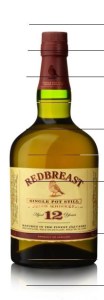Enjoying Nebbiolo a rite of passage for wine nerds
“Do people really drink that?” a student asked me a few years ago on taking her first ever mouthful of Nebbiolo. This variety, from Piemonte in northeastern Italy, makes some of the country’s finest wines. But with its firm dark impenetrable fruit, high acidity and swingeing tannins, Nebbiolo can never be described as easy-drinking. These are wines for the aesthete rather than the hedonist .
Before you stop reading, two things: first of all, most Nebbiolo nowadays is made in a much more approachable style than in times past. Secondly, as with all wines, you need to drink it in the right setting. Arm yourself with a bowl of tajarín, the fine egg-rich pasta of the region, accompanied by wild mushrooms, white truffles, rabbit or a beef ragù, or maybe a risotto, or agnolotti del plin (little folds of pasta stuffed with meat), or maybe simply some roast game or aged parmesan, and Nebbiolo begins to make perfect sense. The food of Piemonte, centred on the towns of Alba and Asti, is amongst Italy’s finest. So are the wines.
Enjoying Nebbiolo is almost a rite of passage for real wine nerds. Tannic and alcoholic they may be, but really good Nebbiolo also has fleeting aromas of violets and perfume, an array of supremely elegant complex fruits that have you scrabbling for adjectives – leather, truffles, black olives, tar, licorice, wood smoke and much more besides. Those tannins allow the wines to age and improve for decades in great vintages.
Patchwork of vineyards
The grape reaches its finest expression in the two small towns of Barolo and Barbaresco, both on the valley floor, surrounded by vineyards high up the slopes, peeking through a shroud of swirling mist. Often called the Burgundy of Italy, the region has a similar patchwork of tiny vineyards, with holdings scattered throughout. As in Burgundy, each sub-region, each vineyard, every change in height and exposure is reflected in the wines. Sadly, the prices are fairly Burgundian too.
In the past, many young men and women deserted the region for the two big local employers – Fiat in Turin and the massive Ferrero chocolate plant, manufacturers of Nutella and Ferrero Rocher, which gobbles up one of the region’s other great products, hazelnuts. Nowadays, farmers with a field or two in either town own a very valuable asset.
There are plenty of other wines produced in the region, including the more approachable Barbera and Dolcetto, as well as some good white wines, but Nebbiolo is the undoubted king, and Barolo and Barbaresco its finest expression. Langhe Nebbiolo is their Bourgogne Rouge: in the right hands it is much more approachable and often good value. Further north in Piemonte, Proprietà Sperino produces silkier wines with a lovely mineral streak.

Langhe Nebbiolo 2014, Massolino, 13.5%, €29.99
Fragrant violets and redcurrants; tangy, elegant, approachable wine with light tannins on the finish.
Stockists: Fresh Outlets, Dublin; Blackrock Cellar.

Proprieta Sperino Costa della Sesia Rosso
Uvaggio 2012, 12.5%, €39.99
A Nebbiolo blend. Scented, floral, laced with herbs; lingering fruits; an utter delight.
Stockists: Terroirs; Red Island; 64 Wine; Red Nose Wine

Massolino Barolo ‘Parafada’ 2012, 14%, €79.99
Beautifully aromatic, with intense structured robust dark fruits and a firm dark finish. Ideally keep it five years-plus.
Stockists: Corkscrew; Green Man Wines; Blackrock Cellar.
Posted in: Irish Times
Leave a Comment (1) →






























